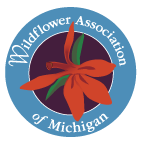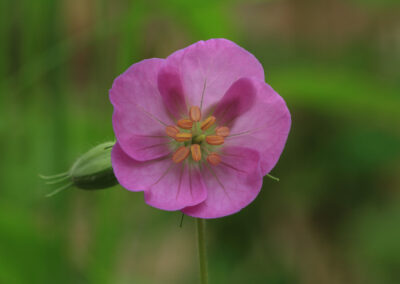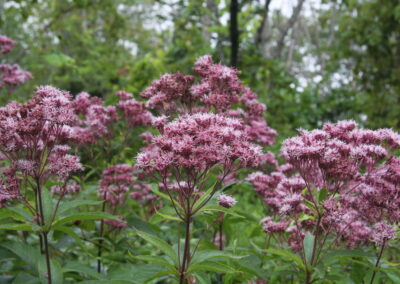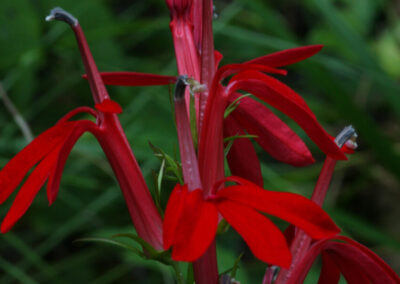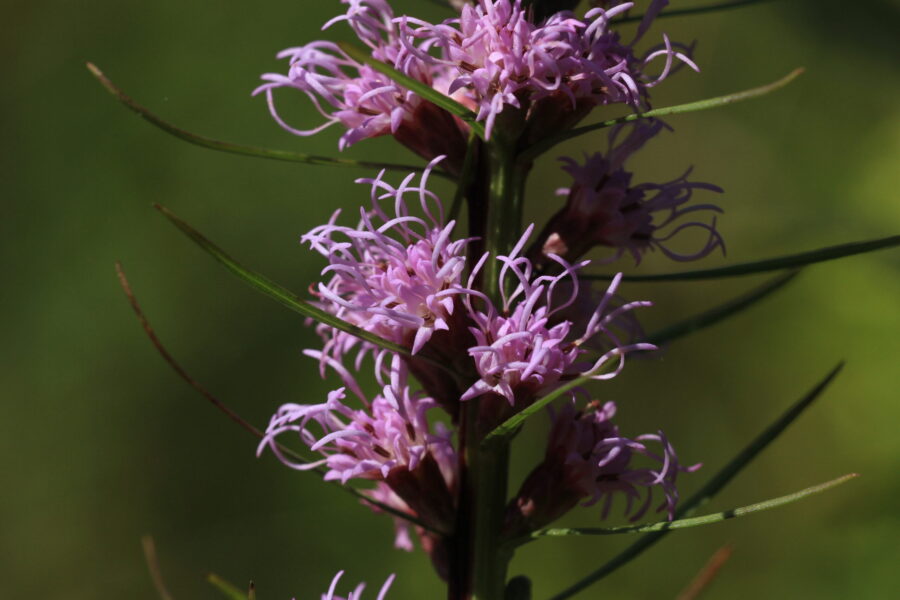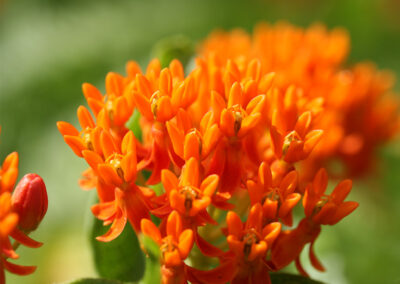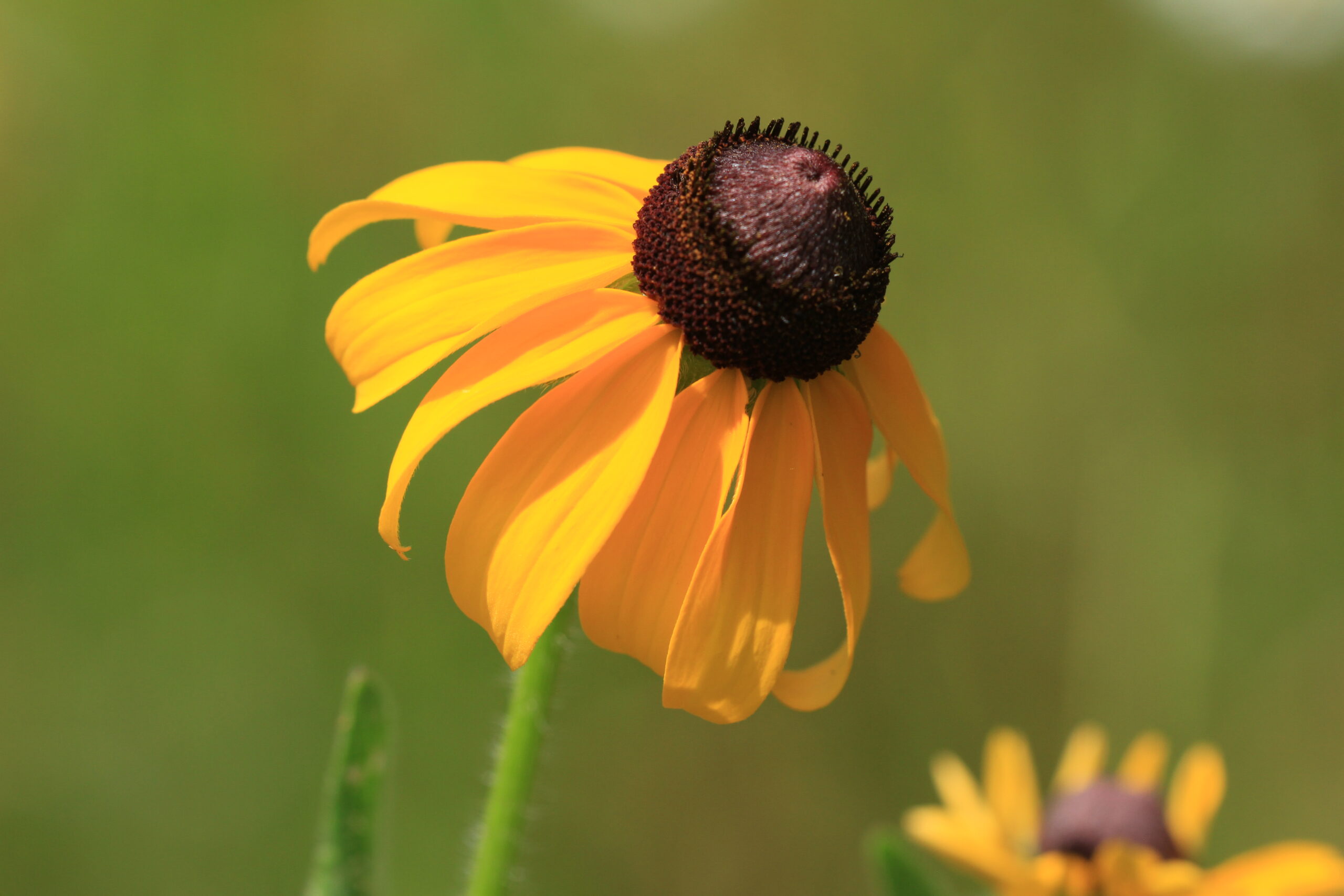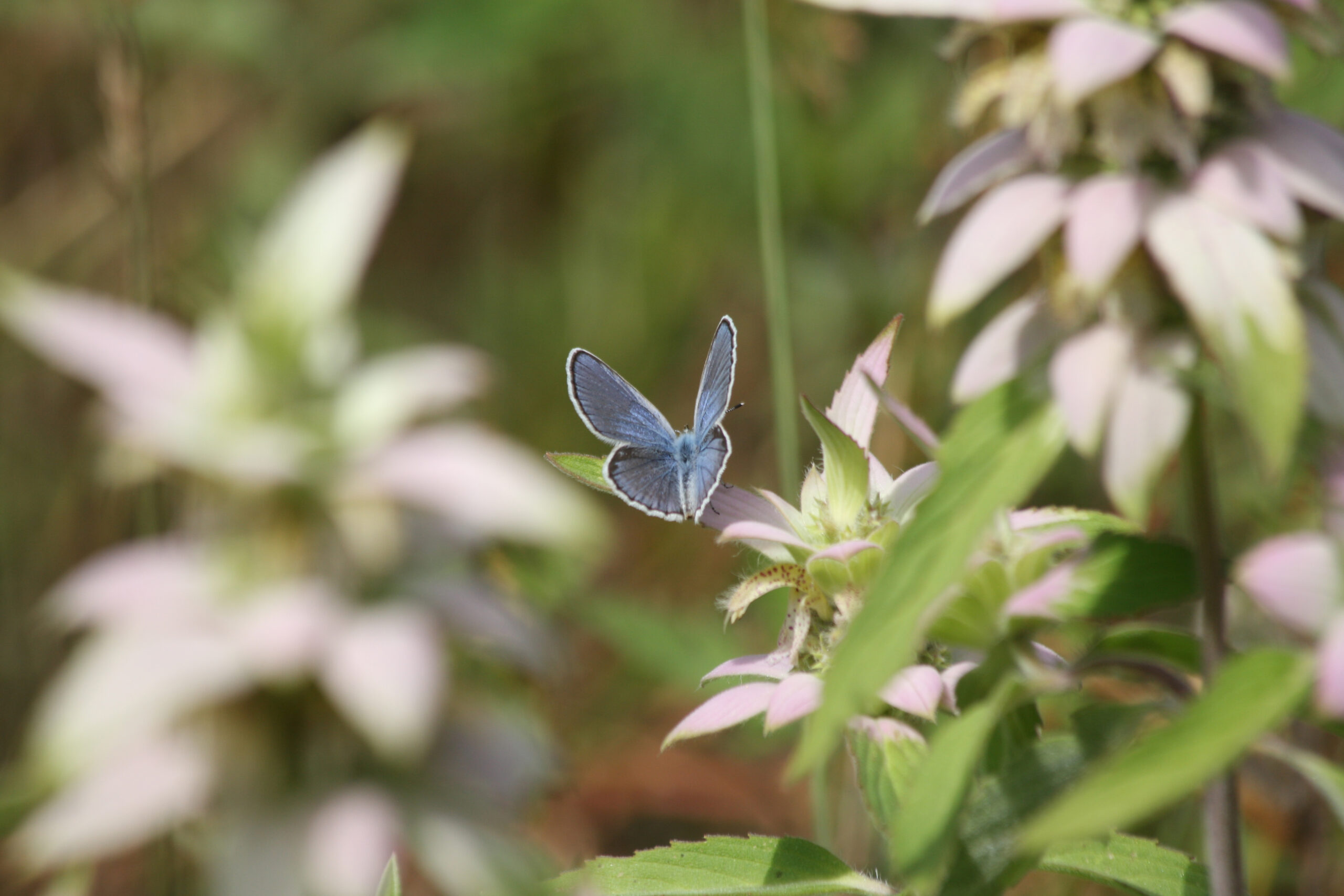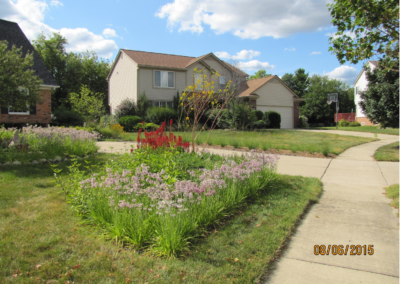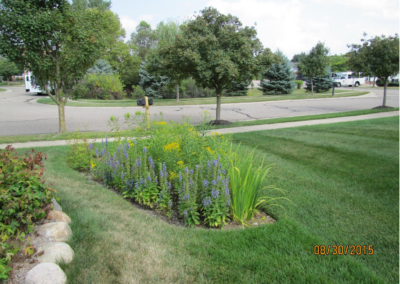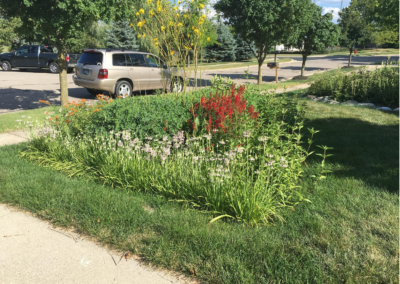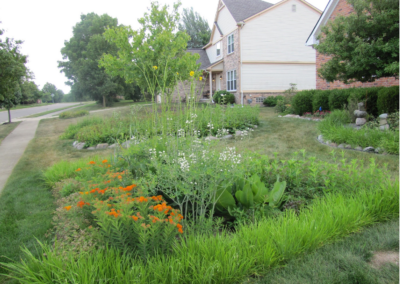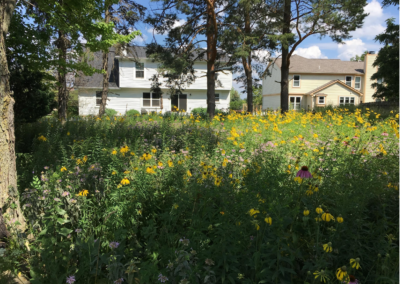Why Native?
Our mission is to encourage the preservation and restoration of Michigan’s native plants and native plant communities
The Benefits of Michigan Native Plants
Why is a walk in the woods so soothing? Why are homes with views of nature more desirable than those that face parking lots? Why does a blooming flower or a bird song make one smile? There is a basic human need to be a part of the natural world, but with continuing development pressures, that natural world is diminishing. The preservation of nature, including native plants and plant communities, for future generations, has become more urgent.
For the web of life to continue to thrive, native plants must be preserved.
Native plants are the foundation of the natural world. Plants are the only living things that convert sunlight into energy and thus provide food for all other creatures. Native plants and the wildlife that depends on them have evolved within a specific region over a long period of time. From insects to birds to mammals, specialized relationships between plants and animals have co-evolved, with specific animals relying on specific plants for sustenance and shelter.
A landscape planted with alien plants is essentially a food desert to our native species.
When people develop their property, it is often done without a thought about preserving our natural world. Landscape plants available at nurseries are often exotic plants from other countries, that did not co-evolve with the wildlife in Michigan. As such, exotic plants offer very little or no ecological benefits. In addition, they sometimes become invasive pests by spreading into wild areas and out-competing the native plants.
American landscapes have shifted from forest and prairie to cities and subdivisions.
In just a few hundred years biological diversity has suffered dramatically. According to the National Audubon Society, it is estimated that over 150 million acres of habitat and farmland have been lost to urban sprawl. However, it is possible to take corrective action and make simple, informed choices to help preserve the diversity of native vegetation and wildlife. Choices such as planting a native tree that supports a multitude of insects that birds need to feed their young, rather than one from Asia that has not evolved with the native insect populations would benefit ecosystems. One could plant a native shrub that offers its fruit during bird migration. A patch of prairie plants in the back yard can support a multitude of insects, pollinators, and butterflies. If homeowners and businesses across the country heed this message and use plants that are native to their region, then ecosystems can be repaired and the decline in biodiversity can be reversed. Read more about this issue here: Genetic Diversity and Plant Preservation – Wild Ones: Native Plants, Natural Landscapes.
Links to assist in growing a native garden:
Meridian Township Native Plant Guide
https://www.canr.msu.edu/nativeplants/
2014 BONAP North American Plant Atlas
https://www.fs.fed.us/wildflowers/Native_Plant_Materials/Native_Gardening/index.shtml
https://www.pollinatorsnativeplants.com/uploads/1/3/9/1/13913231/beesperennialsposter.pdf
Michigan Native Plants
Native Plant Landscapes
The Problem with Invasive Species
According to the State of Michigan, an invasive species is a non-native species “whose introduction causes or is likely to cause economic or environmental harm or harm to human health”. Keep in mind that not every non-native plant brought to Michigan is considered invasive. The threat posed by invasive plants is that they are very aggressive in their growth habit and can readily displace native plants, possibly upsetting the balance in an ecosystem and causing a loss of biodiversity. Invasives can be very effective in spreading through root structures, seed dispersal, long-tern seed viability, and shading out competing plants. They often leaf out early and go dormant later giving them an advantage over natives.
The following are some of the most common and widespread invasive plant species in Michigan and the Great Lakes Region. WAM encourages you to remove these species from your home landscape when identified. If you see these species in your local nature preserves, parks, or public lands, please contact the steward or organization that manages the site and let them know where the invasive population was seen. The Midwest Invasive Species Information Network has an app that can be downloaded to a smartphone to help identify and report invasive species. www.michiganinvasives.org/report.
- Garlic Mustard (Alliaria petiolata)
- Oriental Bittersweet (Celastrus orbiculatus) – please note, it can be difficult to distinguish between this species, our native species (Celastrus scandens), and hybrids between these
- Autumn Olive (Elaeagnus umbellata) & Russian Olive (Elaeagnus angustifolia)
- Spotted Knapweed (Centaurea maculosa or Centaurea biebersteinii)
- Exotic Bush Honeysuckles – Fragrant Honeysuckle (Lonicera fragrantissima), Amur honeysuckle, (L. maackii), Morrow’s honeysuckle (L. morrowii), Standish’s honeysuckle (L. standishii), Tartarian honeysuckle (L. tatarica), European fly honeysuckle (L. xylosteum) Pretty Honeysuckle hybrid (L. X bella) and possibly others
- Japanese Honeysuckle (Lonicera japonica)
- Purple Loosestrife (Lythrum salicaria)
- Stiltgrass (Microstegium vimineum)
- Common Reed (Phragmites australis)
- Multiflora Rose (Rosa multiflora)
- Japanese Knotweed (Polygonum cuspidatum)
- Common Buckthorn (Rhamnus cathartica) & Glossy Buckthorn (Rhamnus frangula)
- Black Locust (Robinia pseudoacacia)
Please note that this is an incomplete list. See links for additional species, as well as further information on identification and removal.
Links to assist in identifying and reporting invasive plants:
- https://mnfi.anr.msu.edu/invasive-species/InvasivePlantsFieldGuide.pdf (A Field Identification Guide to Invasive Plants)
- https://www.michigan.gov/invasives/0,5664,7-324-68002—,00.html (Michigan Invasive Species)
- https://www.mipn.org/ (Midwest Invasive Plant Network)
“…because it is we who decide what plants will grow in our gardens, the responsibility for our nation’s biodiversity lies largely with us.” Douglas Tallamy, Bringing Nature Home
